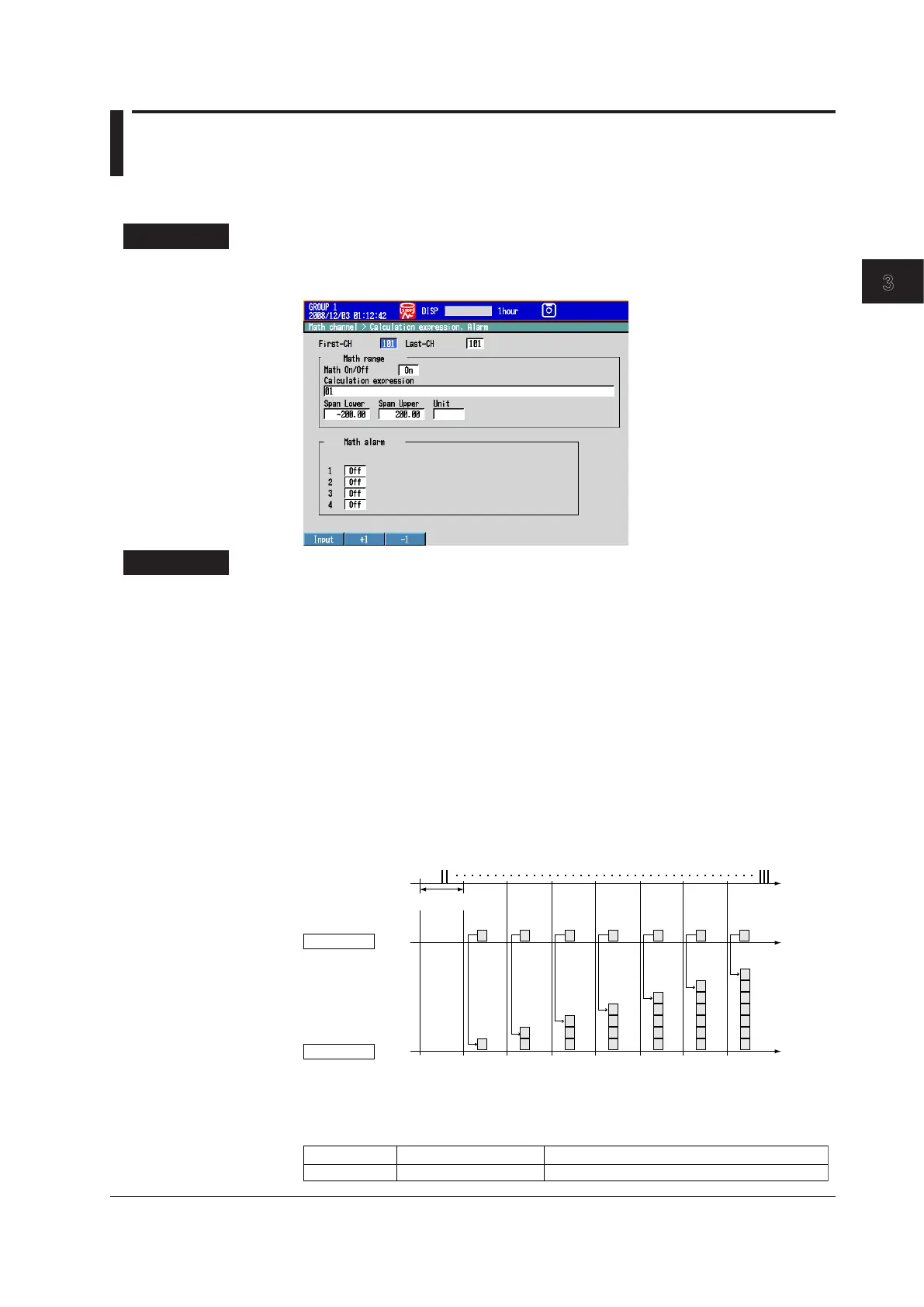Measurement Channels and Alarms
3-17
IM 04L42B01-01E
3
3.10 CountingPulses(/PM1Option)
The pulses applied to the pulse input terminal are counted on a computation channel.
For a description of the function, see section 1.1.
SetupScreen
Press MENU (to switch to setting mode), and select the Menu tab > Math channel >
Calculationexpression,Alarm.
SetupItems
• First-CH/Last-CH
Select the target computation channels.
• Mathrange>MathOn/Off
Select On.
• Mathrange>Calculationexpression
Enter the equation using symbols.
Q01 to Q08: Displays the number of pulses per second.
P01 to P08: Displays the number of pulses per scan interval.
* The numbers 01 to 08 correspond to the pulse input terminal numbers.
For the procedure to set the computation channels, see section 9.1.
The procedure is explained below using an example.
• Example1:PulseSumValue
Display the sum value of the pulse signal applied to pulse input terminal number 6.
Number of pulses
per scan interval
TLOG.SUM
Pulse sum value
Pulse input
Scan interval
(Sum)
P6
Expression
Assign the computation channel and set the expression. Set the span lower/upper
limit and unit according to the application.
Sum of the number of pulses per scan interval
Channel
Equation
Description
TLOG.SUM(P6)

